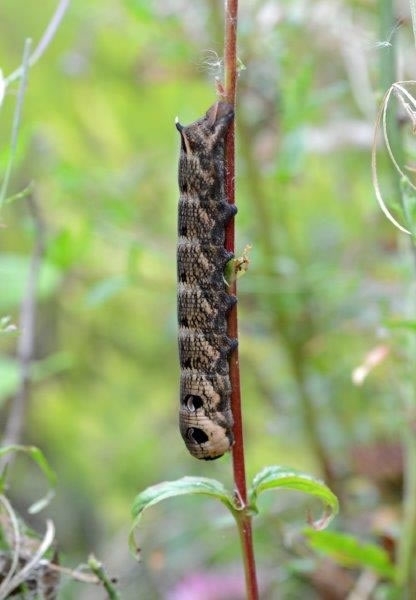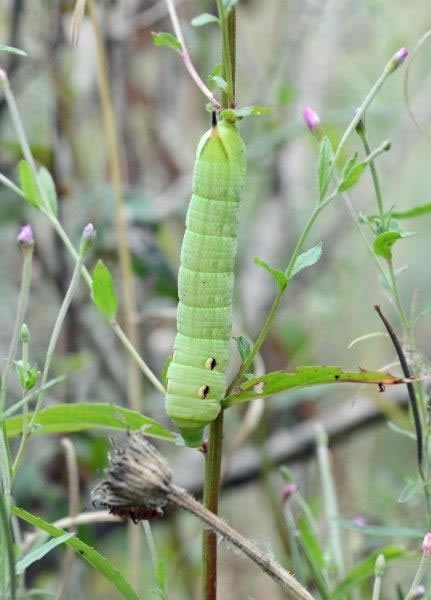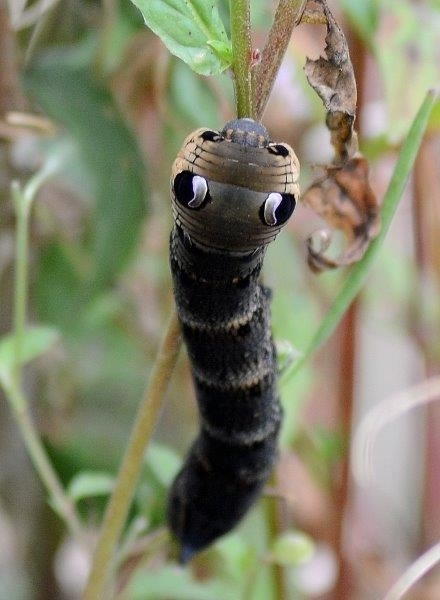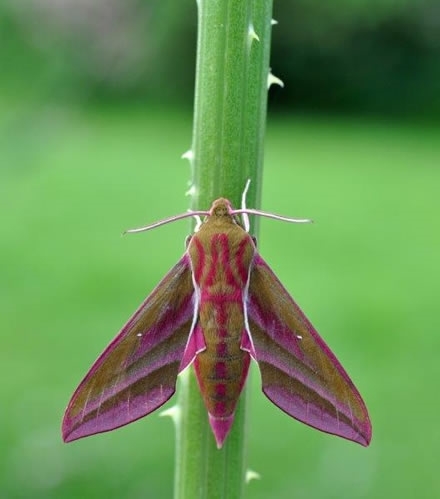This blog post originally appeared on Peter's 'Fresh from the Field' blog on 20th August, 2015.
A friend contacted me to say that he had found four Elephant Hawk moth caterpillars while doing some gardening, and would I like to see them. Well, it seemed like a great idea, especially as he also suggested a pint or two afterwards!
 The Elephant hawk moth caterpillar is meant to resemble an Elephant's trunk
The Elephant hawk moth caterpillar is meant to resemble an Elephant's trunk
I regularly catch these beautiful pink and green adult moths in my moth trap, but rarely see the spectacular caterpillars, even though I often stop to check patches of Rose Bay willow herb – a favourite food plant of the larvae.
I expected that these four might well be munching on fuchsias as they were found in a garden setting, as they often accept these cultivated plants as a substitute food plant instead of willow herb. But in fact they were feeding on a close relative to Rose bay - Broad-leaved willow herb - which had been allowed to grow up in a corner of the garden. A great example of not being too tidy in the garden and allowing a few "weeds" to thrive!
 The less common green version of the caterpillar
The less common green version of the caterpillar
Three of these enormous caterpillars were the usual blackish-brown colour, but one was the less common vivid green in colour. All of them of course had four large ‘eye’ markings on the head and a curved horn on the rear. When startled the caterpillar draws its body in towards its head, causing the ‘eyes’ to inflate, in an attempt to scare off predators. The brown version of the caterpillar is where it gets its name from as it is meant to resemble an elephant’s trunk.
 Here's looking at you kid!
Here's looking at you kid!
The time most people come across these wonderful beasts is when the caterpillar leaves its food plant and starts to wander round looking for a place to pupate. This occurs during August or September, and they often roam around for some time before finding a suitable place to burrow down into the earth and turn into a pupa, where they stay until the following May.
Then the superbly beautiful adult moth will hatch out and start the process off all over again, maybe choosing a plant in your garden to lay her eggs on.
So keep an eye open for two eyes peering back at you – you may well have found an elephant in your garden too!
 What a stunning species - a pristine adult Elephant hawk moth
What a stunning species - a pristine adult Elephant hawk moth
Subscribe to our free newsletter for blog updates
Get Peter's latest blog posts delivered to your inbox - click here to subscribe